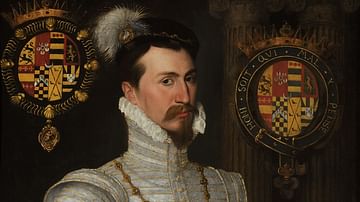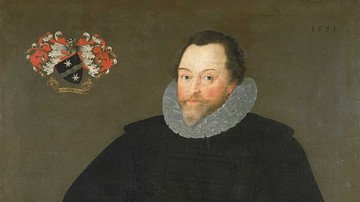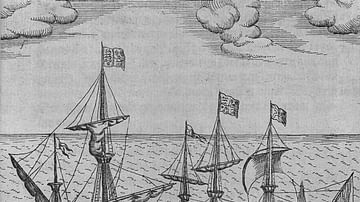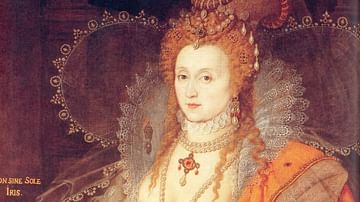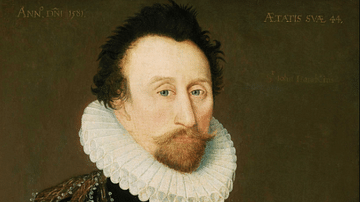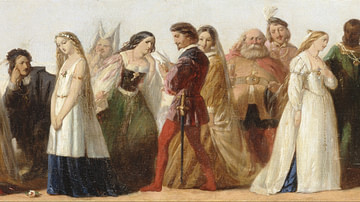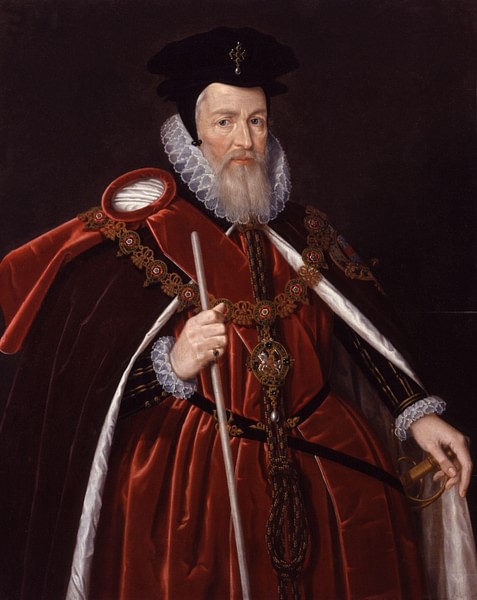
William Cecil, 1st Baron Burghley (1520-1598 CE) was Elizabeth I of England's most important minister for much of her reign (1558-1603 CE). Lord Burghley was Secretary of State for both Edward VI of England (r. 1547-1553 CE) and Elizabeth. He also served the latter as Lord Treasurer from 1572 to 1598 CE and, unlike many great statesmen of the Tudor period, he never seriously fell out of favour with his monarch. Amassing huge wealth and having lived in the impressive Burghley House which still stands today, Lord Burghley died in 1598 CE. He had dominated the political stage across five decades and then retired to the wings having created an enduring noble lineage for his descendants.
Early Life
William Cecil was born in Lincolnshire in 1520 CE, the son of a Welsh minor noble who had gained prominence by supporting the first Tudor king, Henry VII of England (r. 1485-1509 CE). William was sent to Cambridge for his studies, where he was educated in humanist and Protestant ideas. After university, he trained in law at Gray's Inn, London. In 1543 CE William became a Member of Parliament, and although he came from an undistinguished background, William's administrative talents would see him rise to the very top of English politics.
William married his first wife, Mary Cheke, in 1541 CE, but she died just two years into the marriage. On Christmas Day 1546 CE, William then married the highly-educated Mildred Cooke (1526-1589 CE), the daughter of the famous scholar Sir Anthony Cooke (1504-1576 CE). The couple would have three children: Anne, Elizabeth, and Robert.
In 1547 CE William began to move in more powerful circles when he joined the staff of Edward Seymour, the Duke of Somerset who was in all but name the regent for Edward VI. In 1548 CE Cecil became the Secretary of State for the first time, and in 1550 CE he joined the Privy Council of Somerset's replacement as regent, John Dudley, the Duke of Northumberland (l. 1504-1553 CE). Cecil advocated the continued selling off of church property and rights to collect dues in order to enrich the state coffers. It was during this first stint in government that Cecil was knighted.
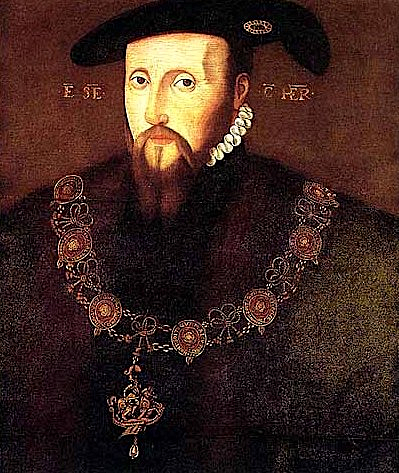
Elizabeth I's Chief Minister
Cecil's political star began to rise again with the succession of Elizabeth I in November 1558 CE. Elizabeth had first taken advantage of Cecil's talents in 1550 CE when he was given the task of administering the princess' private estates. The new queen immediately made Cecil her Secretary of State, a position he held until 1572 CE. In 1561 CE Cecil became the Master of the Court of Wards and Liveries which collected feudal dues and looked after certain orphans. At the same time, Cecil made five times his official salary by selling the official positions it was in his power to bestow. The statesman moved into his magnificent new house during the 1560s CE, the Gothic-inspired Burghley House in Stamford, Lincolnshire.
In October 1562 CE Elizabeth appointed her favourite Robert Dudley a member of the Privy Council, and at only 30 years of age, an unusually young one. Elizabeth may have intended the impetuous and radical-thinking Dudley to act as a counterbalance to the much more conservative Cecil and vice-versa. This rivalry was not only one of ideas but also one of courtier and statesman. Like his queen, Cecil favoured a middle-of-the-road path regarding religion, and he was against the extremism of both Catholicism on the one side and Puritanism on the other. Dudley, meanwhile, favoured the Puritan cause and sought to persecute Catholics. The pair also disagreed over foreign policy where Dudley wanted to help Protestants in Europe with monetary aid and direct military intervention. Cecil, in contrast, was much more aware of the dangers of antagonising Catholic Spain and France, which might leave England isolated or even at war with these greater powers.
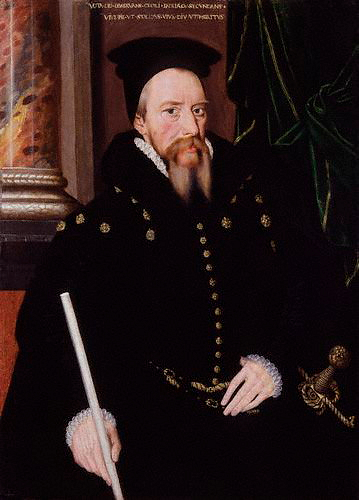
Cecil survived this minor hiccup and was on hand to foil another plot against the queen, the 1571 CE Ridolfi plot. Planned by the Duke of Norfolk and a Florentine banker, Robert di Ridolfi, the conspirators hoped to join forces with Catholic Spain to mount an invasion of England and then crown Mary queen. The treachery was discovered thanks to Cecil's team of spies intercepting and deciphering coded letters. Norfolk was executed and the Spanish ambassador was kicked out of England. At least Cecil finally got his way when Mary was executed in February 1587 CE, but it took a lot of persuasion to reach that final point. Even when the ghastly sentence was carried out, the queen protested she had not given the final word, which led to banning Cecil from her presence for a month.
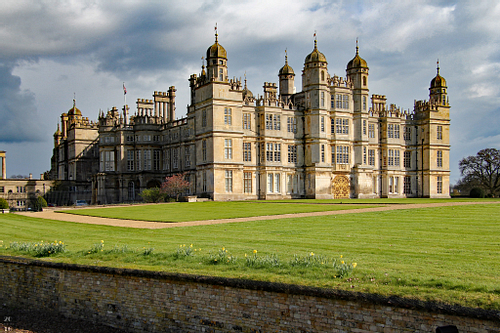
The principal person in the Council at present is William Cecil, now Lord Burghley. He is a man of mean sort, but very astute, false, lying and full of all artifice. He is a great heretic and such a clownish Englishman as to believe that all the Christian princes joined together are not able to injure the sovereign of his country. By means of his vigilance and craftiness, together with his utter unscrupulousness of word and deed, he thinks to outwit the ministers of other princes.
(Ferriby, 190)
Lord Burghley has received his fair share of more modern critics, too, with some historians suggesting he did little to modernise the state's financial system and more accurately assess the value of estates and the taxes payable on them. Burghley was a prime offender in woefully under-assessing the value of his own income for the purposes of tax: £133 compared to the rather more comfortable reality of £4,000 per year. Consequently, Elizabeth's government was never as wealthy as it might have been.
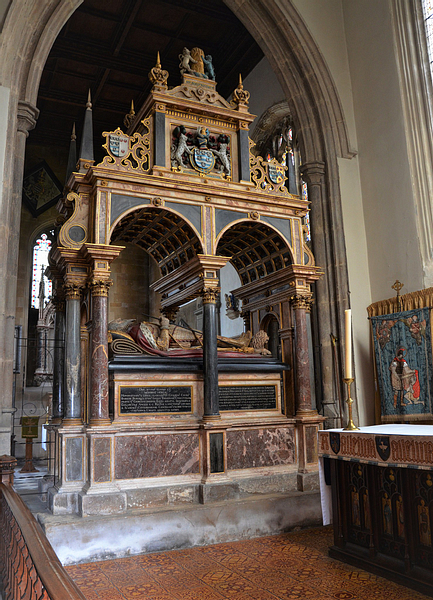
Death & Legacy
Perhaps it is true that William Cecil's greatest achievement was a personal one: longevity at the pinnacle of power. When he was gravely ill and dying in August 1598 CE, Queen Elizabeth fed her long-time political ally with a spoon. The great statesman was laid to rest in a magnificent tomb topped by an effigy representing him as a medieval knight in full armour (which was then already long obsolete). The tomb can still be seen today in Saint Martin's Church, Stamford.
Lord Burghley left his family sitting pretty and he founded an enduring dynasty which continued right away with his son Robert taking over his role in the Elizabethan government and making himself the Earl of Salisbury. In the turbulent seas of Tudor politics, Burghley had, then, not only weathered royal tantrums, tacked clear of backstabbing rivals, and survived the policy shipwrecks that so often took the lives of high-ranking politicians, but he had also endured and prospered for five decades, demonstrating his consummate and perhaps unmatched skill at steering the ship of state while it was captained by possibly England's most mercurial monarch.
